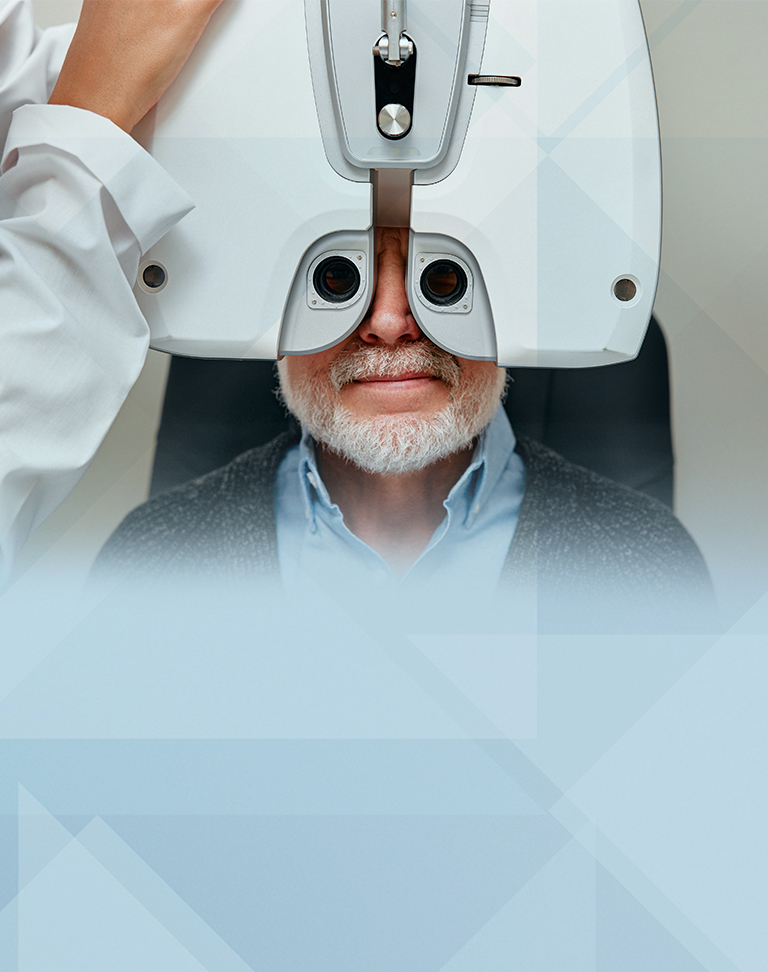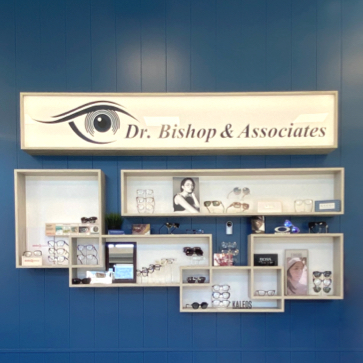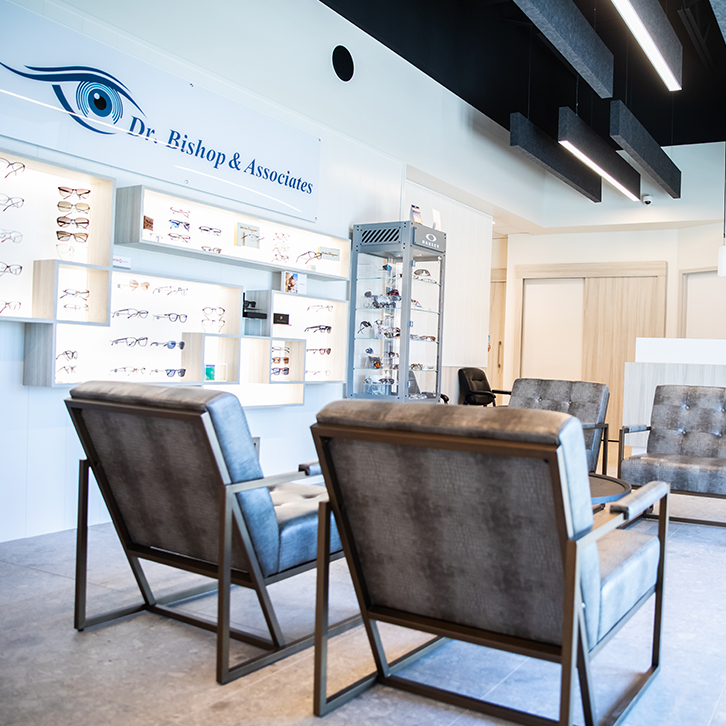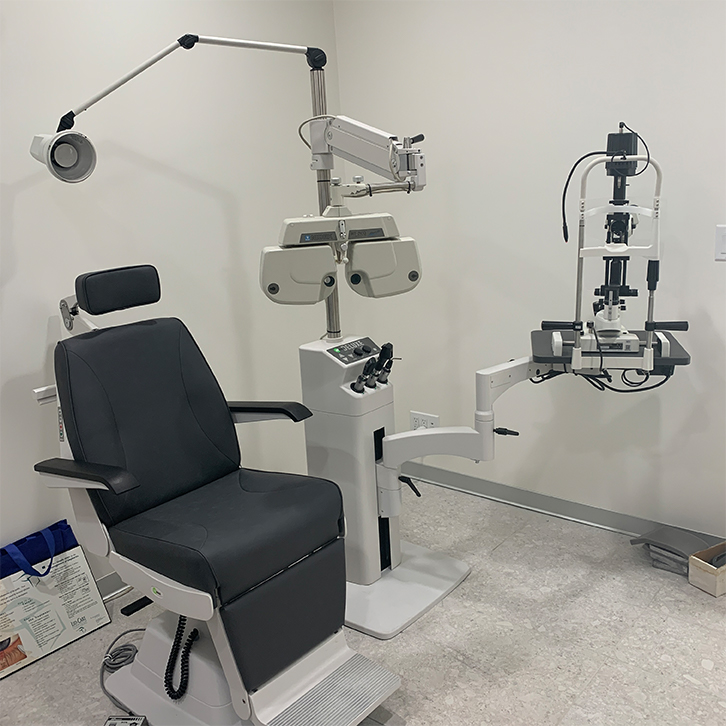A Close Look at Diabetic Eye Health
Diabetes affects your body’s ability to regulate blood sugar, which can damage various organs, including your eyes. High blood sugar can harm the retina and blood vessels, leading to diabetic eye diseases such as diabetic retinopathy.
The treatment or management options we recommend will vary depending on your eye condition, health, and comfort level. For example, some management includes lifestyle habits for managing blood sugar or blood pressure. Other treatments may involve prescription eyewear or laser eye surgery.
Regular diabetic eye exams can make all the difference in preserving your vision. Contact us to schedule yours today.

Helping You Manage Diabetic Eye Disease
Diabetes increases your risk of developing eye conditions, making regular eye exams more crucial to your eye health.
If you experience symptoms, talk to your Optometrist and health care team. Preventing worsening symptoms and protecting your vision is a team effort. We’re on your side, and we’re here to support your eye care and vision needs.
How Diabetes Affects Eyes
Diabetes can affect eye health in many ways and lead to multiple eye conditions. Some common signs and symptoms of diabetic eye disease may include:
- Blurry vision
- Flashes of light
- Floaters or spots
- Sudden vision loss
- Wavy or distorted lines
If you have diabetes or notice any of these symptoms, it’s important to schedule an appointment with Dr. Bishop & Associates. Early diagnosis is key to preserving your vision and protecting your eye health.
Diabetic retinopathy is an eye condition affecting the blood vessels in your eye. Early-stage symptoms often seem minor or go undetected. During later stages, blood vessels in the retina bleed, leaking into the vitreous (fluid filling in your eye). The leak can sometimes cause floaters (seeing spots or strings).
When undiagnosed, the condition can lead to vision loss or blindness. If damage progresses, it can lead to additional eye problems, including diabetic macular edema and glaucoma.
Diabetic macular edema (DME) results from untreated diabetic retinopathy. Damage to blood vessels in the retina causes leaking, resulting in fluid entering the macula, which is responsible for sharp, straight-ahead vision. The excess fluid causes swelling, interfering with sight.
DME symptoms can include:
- Floaters
- Low vision
- Blurry vision
- Double vision
Glaucoma is a leading cause of blindness in Canada. It damages the optic nerve, which translates signals from our eyes to our brain. If our eye experiences too much intraocular pressure (IOP), typically because of improper fluid drainage, the pressure can cause nerve damage.
When diabetes leads to eye damage, it can progress into a condition known as neovascular glaucoma. This occurs when abnormal blood vessels grow from the retina, blocking fluid drainage and increasing eye pressure.
Fortunately, glaucoma is treatable, and early intervention significantly enhances treatment outcomes.
As damage accumulates, scar tissue builds in the back of your eye. The increasing scar tissue can slowly pull the retina from the back of your eye. Eventually, the scars can dislodge your retina, known as a retinal detachment.
Symptoms of a retinal detachment can include:
- Blurry vision
- Flashes of light
- Floaters (increased frequency or amount)
- Dark shadow or curtain over peripheral (side) or central vision
Any retinal detachment is considered a medical emergency, so if you notice any of the symptoms, you should seek attention immediately.
A cataract is a cloudy area or spot in the usually transparent lens of the eye and can appear in one or both eyes. The affected lens area might be small with minimal vision changes, or it can cover a larger area and cause significant vision changes.
Cataract symptoms can include:
- Blurry or cloudy vision
- Dull colour vision
- Light sensitivity
- Halos around lights
- Decreased night vision
- Feeling a film over the eye
Treatment options vary according to cataract size, eye health, and comfort. Your optometrist may prescribe corrective lenses or recommend surgical removal.
Our Diagnostic Technology
At Dr. Bishop & Associates, we use diagnostic technology to thoroughly assess your eye health and detect any potential issues early on. Our eye care equipment allows us to monitor your retina, optic nerve, and overall eye structure with precision so that we can provide quality care.
Whether we’re tracking vision loss, diagnosing eye diseases like glaucoma, or monitoring changes over time, our diagnostic tools give us a clear, detailed view of your eye health for more accurate and timely treatment.
The visual field test helps us detect signs of vision loss. Once the test starts, small lights begin flashing across various areas of the screen.
Every time you see a light flash, you’ll record it (usually with a button), and we can track any areas where your vision is reduced or missing.
Optical coherence tomography (OCT) is a noninvasive imaging test that uses light waves to take cross-sectional images of your retina. This helps identify and diagnose ocular conditions and diseases, such as glaucoma and age-related macular degeneration.
Optical coherence tomography angiography (OCTA) allows us to examine eye structure, including the tiniest details, including blood vessels and capillaries. The imaging is noninvasive and can be very helpful in tracking minor changes in eye health.
Optos Ultra-Widefield 200° optomap provides an anatomically accurate view of 82% of your retina. The more of your retina we can see, the better we can understand your eye health and manage changes.
The ZEISS Clarus 500 retinal imaging technology provides 200° high-resolution colour fundus imaging. When diagnosing eye health, every detail matters. More details, including colour and subtle changes, can tell us more about your eye.
The iCare EIDON is a confocal fundus imaging system with multiple modes for better colour and contrast. The scan allows your optometrist to visualize tissue depth and see a 3D reconstruction of eye sections. This non-invasive process is dilation-free.

Schedule Your Diabetic Eye Exam
Diabetes can significantly impact your eye health, and early detection is key to preventing long-term vision problems. Regular diabetic eye exams help identify potential issues like diabetic retinopathy before they affect your vision.
Don’t wait—schedule your diabetic eye exam today and take the first step toward preserving your vision. Our team is here to help you maintain eye health.
Why Trust Us? We’re Advocates for Eye Health & Vision Needs
Dr. Bishop & Associates is committed to providing care that can make a positive difference in your life.

Dry Eye Clinic
Dealing with scratchy, red, tired eyes can be frustrating—but we’re here to help. At our dry eye clinic, we take a comprehensive approach to diagnosing and managing dry eye, focusing on your unique symptoms and lifestyle. We aim to address the root cause to achieve long-lasting relief, including innovative treatments with noninvasive IPL and radiofrequency technology.

BEAUTIFY @ Dr. Bishop’s
We want you to feel confident in your skin. Our aesthetic services are designed to help renew and replenish your skin with minimally invasive treatments and no downtime. With AlumierMD skincare and IPL, radiofrequency, and laser rejuvenation technology, we’ll work with you to create a personalized plan to address your skin concerns and reveal your natural beauty.

Myopia Management
Nearsightedness (myopia) is on the rise, and it can have long-lasting impacts on your child, from their success in the classroom to their eye health later in life. Myopia management is a personalized, proactive approach to slowing myopia progression to help support your child’s sight today and protect their long-term eye health. Your child’s vision is our top priority.

Where to find us
Willow Park Village

Our Address
- 575 – 10816 Macleod Trail SE
- Calgary, AB T2J 5N8
Contact Information
- Phone: (403) 974-3937
- Fax: 403-509-4859
Our Hours
Legacy Township

Our Address
- 230 – 200 Hartell Way SE
- Calgary, AB T2X 4S9
Contact Information
- Phone: (403) 974-3937
- Fax: 587-392-7365
Our Hours
Beacon Hill

Our Address
- 615 – 11877 Sarcee Trail NW
- Calgary, AB T3R 1W5
Contact Information
- Phone: (403) 974-3937
- Fax: 403-509-4854
Our Hours
Northgate Village

Our Address
- 103 – 495 36 St NE
- Calgary, AB T2A 6K3
Contact Information
- Phone: (403) 974-3937
- Fax: 403-509-4866
Our Hours
Our Eyewear Brands

- Ray Ban
- Tom Ford
- Zeiss
- Kate Spade
- Oakley
- Gucci
- Maui Jim
- Fossil
- Saint Laurent
- Calvin Klein
- David Beckham
- L.A.M.B.
- Fossil
- Ray Ban
- Tom Ford
- Zeiss
- Kate Spade
- Oakley
- Gucci
- Maui Jim
- Saint Laurent
- Calvin Klein
- David Beckham
- L.A.M.B.

Virtual Try-On: Effortlessly Sample Your New Look
Ready to find your perfect pair? Try on our wide range of glasses and sunglasses virtually!
Explore styles available at all our Calgary eye clinic locations.
Dr. Bishop & Associates is here to help you see the world in style.








